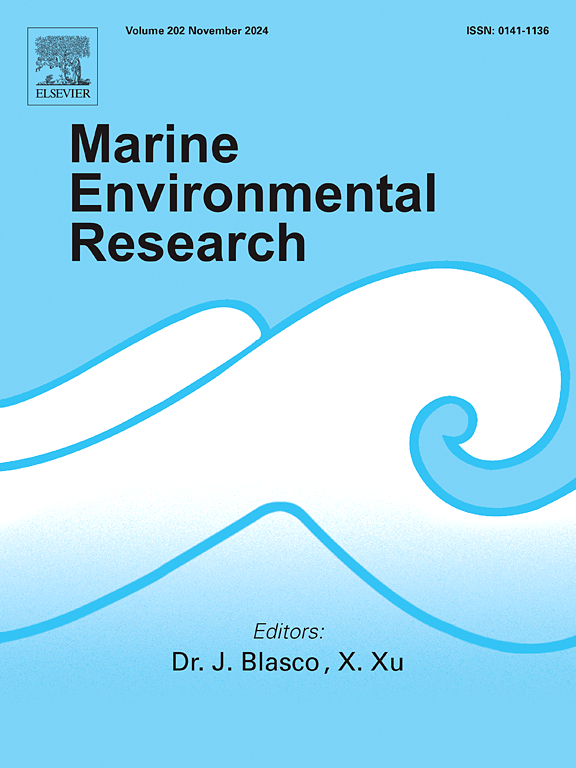Unveiling active nitrate and nitrite cycling in a eutrophic coastal bay, southern China from a dual isotope perspective
IF 3
3区 环境科学与生态学
Q2 ENVIRONMENTAL SCIENCES
引用次数: 0
Abstract
Increased nutrient loading in coastal waters poses a threat to marine ecosystems. To develop effective management strategies, a clearer understanding of nitrogen cycle dynamics for the main species is crucial for understudied urbanized areas. By employing stable isotopes of nitrate (δ15N and δ18O) and the rarely reported nitrite isotopes, we found a decoupling between physical mixing and microbial transformative processes in the Xiamen Bay. During the dry season, dominated by endmember mixing, the SIAR (Stable Isotope Analysis in R) model identifies manure (50%) as the primary nitrate source, followed by fertilizer, sewage, and rainfall. Microbial processes govern nitrogen cycling during the wet season, as evidenced by the relatively low ε value (∼2.4‰) using the Rayleigh fractionation model. This likely reflects distinct environmental conditions in coastal waters compared to the open ocean, such as limited light and iron availability. Nitrite isotope ratios implicate ammonia oxidation and nitrite oxidation as the primary drivers of nitrite variability during the wet season. This suggests that seasonal nitrite accumulation in summer may result from a decoupling of these processes in response to temperature fluctuations. Theoretical calculations of the nitrite reservoir, based on key parameters like temperature and substrate concentration, further support this argument. Our findings highlight the highly dynamic nature of nitrate and nitrite cycling in coastal environments. This underscores the need for further research in these understudied coastal systems, particularly in the context of intensifying human activities and climate change.

求助全文
约1分钟内获得全文
求助全文
来源期刊

Marine environmental research
环境科学-毒理学
CiteScore
5.90
自引率
3.00%
发文量
217
审稿时长
46 days
期刊介绍:
Marine Environmental Research publishes original research papers on chemical, physical, and biological interactions in the oceans and coastal waters. The journal serves as a forum for new information on biology, chemistry, and toxicology and syntheses that advance understanding of marine environmental processes.
Submission of multidisciplinary studies is encouraged. Studies that utilize experimental approaches to clarify the roles of anthropogenic and natural causes of changes in marine ecosystems are especially welcome, as are those studies that represent new developments of a theoretical or conceptual aspect of marine science. All papers published in this journal are reviewed by qualified peers prior to acceptance and publication. Examples of topics considered to be appropriate for the journal include, but are not limited to, the following:
– The extent, persistence, and consequences of change and the recovery from such change in natural marine systems
– The biochemical, physiological, and ecological consequences of contaminants to marine organisms and ecosystems
– The biogeochemistry of naturally occurring and anthropogenic substances
– Models that describe and predict the above processes
– Monitoring studies, to the extent that their results provide new information on functional processes
– Methodological papers describing improved quantitative techniques for the marine sciences.
 求助内容:
求助内容: 应助结果提醒方式:
应助结果提醒方式:


